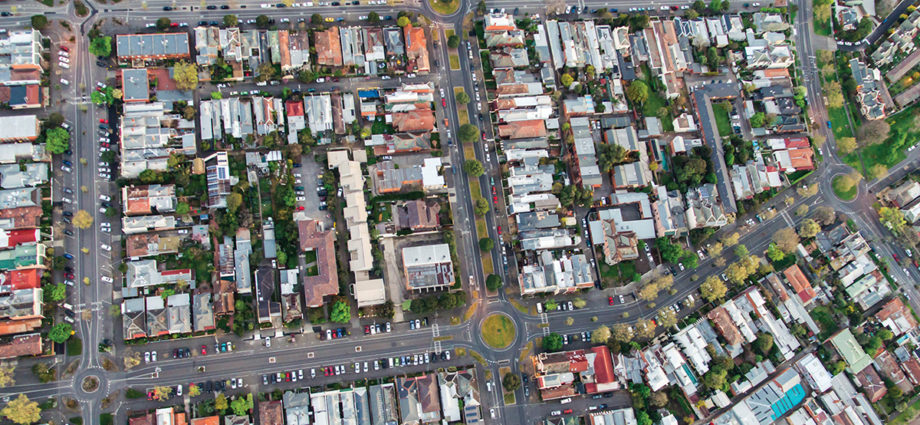PHOTO: NZ Residential Property Market
CoreLogic NZ’s latest Property Market & Economic Update released today cements evidence from a number of market indicators that investor demand has surged back to 2016 levels, prompting speculation that further intervention by government and regulators might be needed to rebalance buyer activity.
Kelvin Davidson, CoreLogic’s Senior Property Economist, says there is a rising possibility that a 40% deposit requirement for investors could be officially mandated later in the year.
“CoreLogic’s Buyer Classification series shows that mortgaged investors surged to a 27% market share in the final quarter of 2020, up from 24% in Q2. This growth coincided with a 6.1% increase in property values in the quarter; a rise not seen since the three months to February 2004 at 6.6%.
“The last time that mortgaged investors had a market share near this high was 28% back in Q3 2016 when the Reserve Bank imposed a 40% deposit requirement. While we’ve already seen the Reserve Bank move to reinstate LVR speed limits at 30% from March 1st, the question is, will this be the end point? We think a move to 40% is possible if investor participation continues to push higher.”
Davidson says an extension to the current five-year hold period for the Bright-line test could be on the cards too, while the Reserve Bank has also requested the ability to use debt-to-income ratio caps if and when they deem it necessary.
“With property politics heating up and affordability pressures re-emerging, it looks likely that heightened regulation could be a key feature of the market in 2021. Supply (or lack thereof) is also a critical issue affecting the market and igniting much of the heat. This is both a shortage of available listings on the market but also a simple lack of newly constructed residential properties too,” says Mr Davidson.
CoreLogic’s Buyer Classification data shows that first home buyers made up 23% of purchases in Q4. “Given that FHBs don’t have anything to list or sell before they buy and that very few investors aren’t selling much at present either, their continued buying presence is likely to keep the pressure on the supply/demand balance in the market.
“Looking at movers (including upgraders and downsizers), their share of purchases dipped to just 26% in Q4, an historically low level. In some cases, existing owner-occupiers are choosing to stay where they are due to already high debt levels and the extra costs associated with moving. But in other cases, people aren’t moving because they simply can’t find the ideal next property, given the tight supply of available listings. In turn, that is feeding back into an even tighter listings picture.
“Despite housing construction staying steady at recent high levels, New Zealand’s housing supply deficit following the GFC is still ultimately a key factor behind recent strong house price growth and stark lack of housing stock. In the end, government policy needs to be firmly focused on building more houses. We just need more properties,” says Mr Davidson.
Key Facts from the CoreLogic Property Market & Economic Review:
• A key support for the recent strength in the residential property market has been the stronger than forecast performance of the economy, especially with unemployment remaining lower than anticipated. From its current level of 5.3% (up from the recent low of 4.0%), the unemployment rate may only rise by another 1% or so. Meanwhile, timely indicators such as the NZ Activity Index show that the wider economy continues to recover, and sectors such as construction are still growing steadily (despite previous fears of a collapse).
• Mortgage credit has continued to flow in the past few months after the slump in activity in April and May. The rise in activity over the second half of 2020 was so strong that it far outweighed the lockdown-related hiatus, and left the value of mortgage lending by the banks up by almost 10% for the calendar year, reaching new record highs over the final months of 2020.
• Property sales volumes also picked up strongly in the final few months of 2020 and could have been even higher still were it not for the lack of listings on the market. Combined with low mortgage rates, that lack of choice for buyers has been a key contributor to the sharp growth in property values lately.
• The CoreLogic House Price Index showed that average property values across NZ as a whole rose by 6.1% in Q4 – a figure not seen since the 6.6% rise in the three months to February 2004. Tauranga (10.2%), Wellington (8.1%), and Dunedin (6.4%) were all above that national average, with smaller areas such as Masterton and Whanganui also recording strong growth. Hamilton (4.1%) and Christchurch (3.4%) were slightly more subdued in Q4, but those growth figures were still fairly solid, especially for Christchurch (which has seen little change at all in property values for a number of years now).
“The main economic figures suggest things are progressing relatively well for NZ’s post-COVID recovery, with labour markets performing better than expected and economic activity rebounding well. Strengthening economic conditions point to continued momentum in the property market, backed by historically low interest rates which look set to stay at record lows for the year. However, after an 11% gain in housing values in 2020, growth in 2021 could be a little slower, as potential regulatory changes in the property market and affordability challenges start to take effect,” concludes Mr Davidson.













